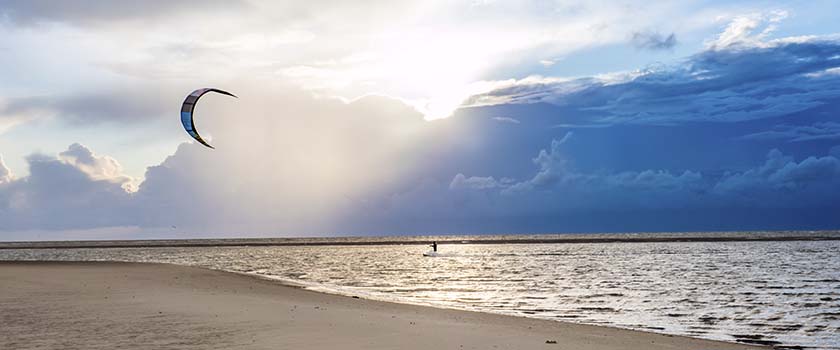As part of its partnership with Peace Parks Foundation, UBP is guided by their expertise in biodiversity measurement and applies this knowledge when engaging with the corporate sector. The aim is to help companies learn from the conservation specialists and disclose more accurate data on nature.
2023 saw the launch of the UN’s Global Biodiversity Framework and also the TNFD, the nature-focused cousin of the TCFD. This has resulted in an increased focus on the part of the finance and corporate community on how to find an agreed baseline and how to measure biodiversity improvement. At UBP, we have been working with Peace Parks Foundation for several years, as we believe the best place to start is by learning from a leader in a sector which has been measuring biodiversity net gain for many years.
Of course, this is relatively straightforward compared with measuring change in the listed equity space, but the choice of approach, learnings on data availability and reliability is knowledge that is relevant and helpful. Here, Colin Porteous, CIO of Peace Parks, shares his thoughts and outlines some real-world examples of biodiversity restoration which have been possible, in part, thanks to partners such as UBP.
What is biodiversity net gain?
Simply put, this is leaving the variety of life in a better state than the one in which one found it. Peace Parks refers to this as “Biodiversity Protection and Restoration”, and it is a key impact indicator in our Impact Framework.
Well-managed and biodiverse landscapes serve as safe havens for plants and animals. By ensuring habitat connectivity and reduced fragmentation of high-value ecosystems through 1) the sustainable use of resources, 2) well-governed and planned landscapes, and 3) improved ecosystem functioning, key services to people and nature are created, including clean water, carbon sequestration, pollination, and flood control. The impact of this is tracked using various indicators (linked to the Global Biodiversity Framework, SDGs and other frameworks), such as priority species populations, number of priority populations, and the percentage of degraded or converted ecosystems under restoration. The challenge is that each ecosystem is unique, and has its own risks and pressures, which means that the success metrics can differ across landscapes. This is exactly the challenge that corporates face when assessing their impact and biodiversity net gain. In order to be successful in actual gains, one must truly understand the environment in which one operates, and the specific risks being addressed.
Measuring biodiversity: learning from the conservation sector
Peace Parks has implemented a first-of-a-kind monitoring, evaluation, and learning (MEL) system to monitor ecosystem restoration and rewilding interventions, and to ensure their effectiveness. This platform, which integrates a wide range of tools and technologies, is specifically designed to align with the organisation’s strategic framework and match funding with impacts in the vast transboundary landscapes in which Peace Parks operates.
The methods used range from basic data sheets and in-house-developed apps, to sophisticated remote-sensing technology, using the method that best fits the requirement. Impact indicators are designed to measure performance across our thematic areas and to provide a comprehensive yet focused view of trends and patterns.
This advanced toolkit empowers Peace Parks to anticipate challenges and identify opportunities within biodiversity protection and restoration efforts early on. It enables more responsive and accurate strategies to improve the management of ecosystems and wildlife throughout protected areas, and creates an invaluable bank of metrics freely accessible to those committed to conservation in African.
Peace Parks’ contribution to global biodiversity goals
In December 2022, a historic new Global Biodiversity Framework was signed by 188 countries around the globe as part of the 15th Conference of Parties to the UN Convention on Biological Diversity. Peace Parks actively supports the framework’s 30x30 target to preserve 30% of the Earth’s terrestrial and marine spaces by 2030 through expertly managing protected areas and creating interconnected transboundary landscapes through ecological linkages.
In many areas where wildlife has been depleted over the years, Peace Parks carefully rebuilds populations by translocating wildlife from areas where there is an abundance; since 2001, 18,163 animals have been rewilded to protected areas across southern Africa, resulting in an estimated population of over 90,000. These efforts also extend to protecting and restoring the species, habitats, ecosystems, and genetic diversity that fall within these regions.
Proven by robust science, rewilding connects biodiversity and climate change by harnessing the power of wildlife to anchor nature, stabilise the climate and restore landscapes, all to the benefit of local and global communities.
Case study: The return of the rhino to Zinave National Park
More than 40 years ago, the rhinoceros disappeared from Mozambique’s Zinave National Park. A civil war lasting 16 years meant that many parts of the country were decimated. Zinave National Park, a 400,000 ha wilderness once teeming with wildlife, fell silent as most species became extinct after a collapse of park management. Peace Parks and Mozambique’s National Administration for Conservation Areas (ANAC) entered into a co-management agreement in 2015 and began their restoration efforts.
By 2022, over 2,300 mammals representing 16 species had been reintroduced, including a mega-herd of eland, and the park saw the natural return of its first lion. After seven dedicated years, Zinave was finally ready to reintroduce two more keystone species, the white and black rhino.
Completed in 2023, Peace Parks and its partners embarked on a landmark cross-border translocation of 37 rhino, conducted in three phases. This marked the historic return of the species to Zinave and also raised its status to the country’s first “Big Five” national park. The translocation of such a large population of rhino from Manketti Game Reserve in South Africa was a massive operation that involved meticulous planning to move and secure the founder herds. This allowed for the re-establishment of healthy populations in their original habitat.
Since then, as a further symbol of rewilding hope, four rhino calves have been born in the park, one of which was a critically endangered black rhino. A testament to the concerted efforts invested in Zinave, these first members of the new generation indicate that the ecosystem is now healthy enough to sustain both keystone species and support growing biodiversity.
Peace Parks tracks rewilding efforts and population estimates of individual species to ensure the long-term survival of the species being translocated and to evidence a measurable contribution to the Global Biodiversity Framework.
Relevance for investors
The question remains: what is the relevance of biodiversity to investors, especially in areas outside their direct influence?
Most important, from a long-term investment perspective, is the physical risk presented by a collapse in biodiversity. Corporate biodiversity impacts have local, regional and global implications in addition to direct impacts on the resilience and cost base of the corporate. This combined effect means that business decisions of where to place a factory or where to source inputs must necessarily include biodiversity in management decisions.
This decision-making relies on robust data and a solid understanding of where the risks and opportunities lie. The recently launched regulatory framework should support this and simultaneously emphasise that, in order to operate a successful business, stakeholders need a full understanding of the implications of a fund’s supply chain. This is a commercial decision, not simply a sustainability one, as it comes with cost implications and revenue opportunities. As biodiversity by its nature is not homogenous, each corporate must understand first how to measure its unique impact and risk profile and then look to address it.
The corporate world has so far largely taken a “wait-and-see” approach – in part because the range of metrics and guidance are deeply confusing and sometimes contradictory. Peace Parks and UBP, through the innovative Biodiversity Committee, is in a unique position to encourage businesses to get off the sidelines and guide them through this complex adjustment to help position them as business leaders fit for the 21st century.








